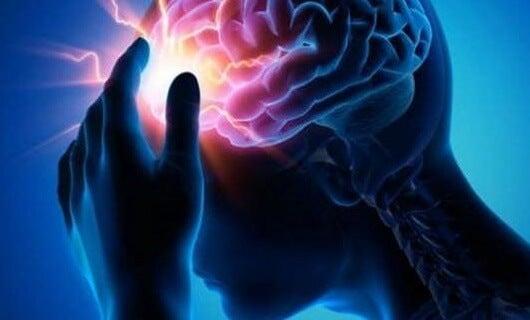The diagnosis of migraine should be made early in order to try and preserve as much as possible the patient’s quality of life. However, and this is where the problem begins, sufferers aren’t always referred to the most appropriate specialists. Therefore, they tend to resort to self-medication (thus aggravating the disease) and it usually takes an average of two to three years to start up an effective intervention.
A migraine isn’t just a headache. In reality, it’s a disabling neurological disease. It affects women in greater numbers and its management is still as complex as it’s challenging. Experts suggest that it’s a condition where it’s not only pharmacological treatment that’s necessary. Even taking care of lifestyle and eating habits is key.
This disorder has had a tremendous impact on society today. In fact, in a study conducted at the University of Neuromedicine Trondheim (Norway), it was pointed out that migraine is the main cause of disability in people under 50 years of age. Indeed, it’s the most common cause of sick leave according to Timothy Steiner and colleagues, authors of this work.
In 2006, the European Headache Federation claimed that migraine is a forgotten epidemic and that we need better resources and research. Furthermore, they claimed that greater social awareness is a priority. They also suggested that there are a large number of people who haven’t received a correct diagnosis.
Many people resort to self-medication to treat their migraines. For this reason, primary care professionals should refer patients to specialists for treatment appropriate to their needs.
The diagnosis of migraine
Migraine is a multifaceted neurobiological phenomenon. In other words, it involves numerous neurochemical changes and is heterogeneous in its symptoms. Some migraines are of vascular origin and present with vertigo and ataxia. There are also those that are only suffered at certain times of life.
The diagnosis of migraine isn’t always easy. It’s usually done quite late or even inappropriately as it can be confused with tension headaches or eye strain. In 2018, a European study known as the Eurolight study was conducted. It came to the same conclusions. That we’re facing a disease for which medical and even social resources don’t seem to be sufficiently prepared.
- The authors of this research claimed that only 33 percent of migraine sufferers go to see a specialist. The rest either resort to self-medication or receive treatment from their primary care doctor who doesn’t always respond to their needs. Therefore, their quality of life doesn’t improve.
- Almost 50 percent of people who go to the doctor abandon their treatment because they don’t see the expected results. This is a problem because, if they resort to self-medication, they run the risk of their migraine becoming chronic.
What are the symptoms for a diagnosis of migraine?
The diagnostic criteria are set by the International Headache Society. They’re as follows:
- Migraine can present with or without aura.
- The aura constitutes a series of alterations that precede the migraine itself. These involve problems of sensitivity, vision, balance, muscle coordination, etc.
- The usually throbbing pain lasts between four and 72 hours.
- It gets worse with physical activity.
- During the pain, one of the following symptoms appears: nausea, vomiting, photophobia and/or sonophobia (annoyance to light, sounds, and smells).
- This type of headache can appear up to five times a month.
It should be noted that a complete clinical analysis (physical examination and detailed neurological examination) must be carried out in order to diagnose migraine.

Migraine treatment
As we mentioned earlier, the treatment of migraine requires a multidisciplinary approach. In other words, drugs aren’t enough. Indeed, as much as the sufferer may desire paracetamol or ibuprofen to alleviate their pain, they don’t contribute much in the long run. Instead, specific medications are needed, added to other specialized and complementary strategies. They’re as follows:
- The patient must have at their disposal all the data regarding the disorder. They should be informed that it’s a neurological condition and that they need to keep a journal of their headaches. Only then, can triggers be identified and more accurate (and personalized) strategies may be recommended.
- For more severe migraine attacks, triptans or dihydroergotamine are prescribed, as well as antiemetics. These are dopamine antagonists.
- A specific diet is recommended. For example, to avoid coffee, wine, cheese, and chocolate.
- Psychotherapy is also suitable for reducing triggers such as stress and anxiety. In this context, certain relaxation techniques are also usually taught.
To conclude, the treatment of migraine is based, above all, on preventive measures to reduce or avoid its appearance. Consequently, it’s necessary to do everything possible to receive an early diagnosis. Therefore, a qualified specialist should be consulted.
The post The Diagnosis of Migraine, a Disabling Neurological Disorder appeared first on Exploring your mind.



















Comments